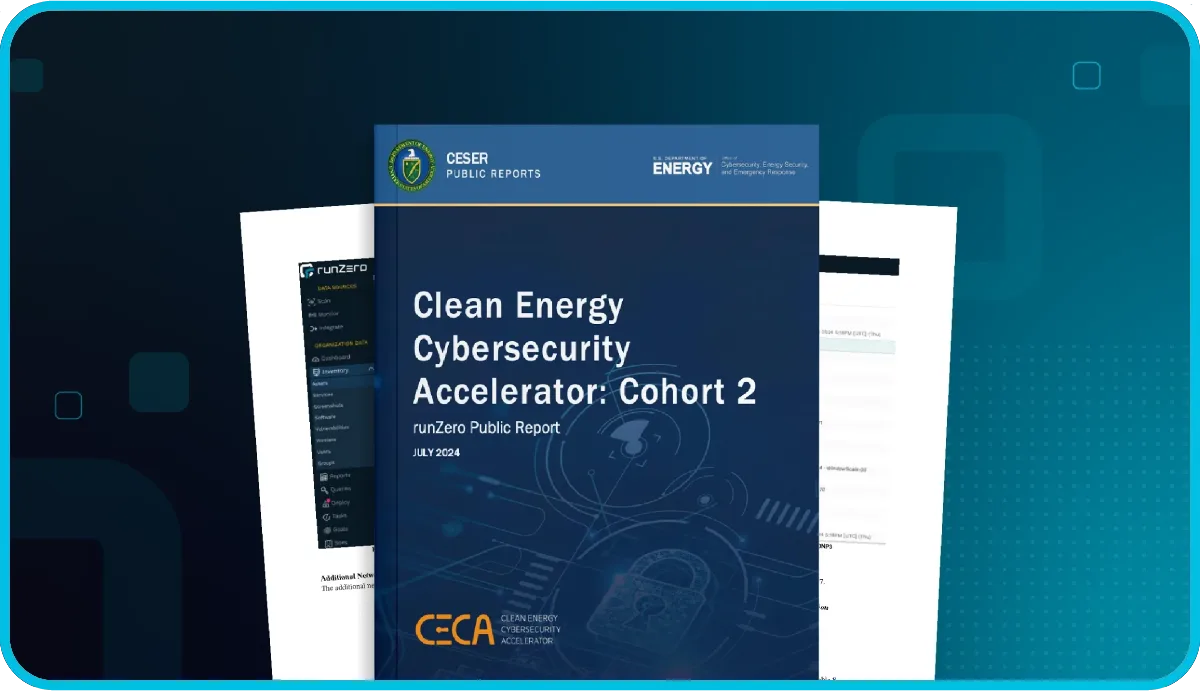
On October 3, 2022, the Cybersecurity and Infrastructure Security Agency (CISA) issued Binding Operational Directive (BOD) 23-01: Improving Asset Visibility and Vulnerability Detection on Federal Networks. The directive requires that federal civilian executive branch (FCEB) departments and agencies perform automated discovery every 7 days and identify and report potential vulnerabilities every 14 days. Additionally, it requires the ability to initiate on-demand asset discovery to identify specific assets or subsets of vulnerabilities within 72 hours of receiving a request from CISA.
To meet these requirements, agencies will need to start with an accurate asset inventory. Most agencies will attempt to leverage existing solutions, like their vulnerability scanners, to build their asset inventories. It seems reasonable to do so, since most vulnerability scanners have built-in discovery capabilities and can build asset inventories. However, they will quickly learn that vulnerability scanners are not up for the task and cannot help them sufficiently and effectively meet the requirements laid out by CISA.
Let's take a look at why agencies need a solution solely focused on asset inventory, in addition to their vulnerability scanner, if they want to tackle CISA BOD 23-01.
Asset inventory is a foundational building block #
Every effective security and IT program starts with a solid asset inventory. CISA BOD 23-01 reinforces that imperative. Specifically, it states, "Asset discovery is a building block of operational visibility, and it is defined as an activity through which an organization identifies what network addressable IP-assets reside on their networks and identifies the associated IP addresses (hosts). Asset discovery is non-intrusive and usually does not require special logical access privileges."
What does this mean? FCEB agencies looking to meet the requirements outlined by CISA BOD 23-01 must be able to discover managed and unmanaged devices connected to their networks. Internal and external internet-facing assets must be cataloged with full details and context. All within the timeframe outlined by CISA.
So now, the question is why vulnerability scanners can't be used to meet the requirements laid out in the directive.
The challenges of asset inventory with vulnerability scanners #
As the number of devices connecting to networks continues to grow exponentially, agencies need to stay on top of these devices; otherwise, they could provide potential footholds for attackers to exploit. However, common issues like shadow IT, rogue access, and oversight continue to make it difficult to keep up with unmanaged devices. BOD 23-01 highlights the importance of identifying unmanaged assets on the network. That's why the need for a fully comprehensive asset inventory is the key to adequately addressing the directive.
So, why can't vulnerability scanners deliver on asset inventory? Most vulnerability scanners combine discovery and assessment together, resulting in slower discovery times, delayed response to vulnerabilities, and limited asset details. As a result, most agencies are left wondering how they can do a better job building their asset inventories.
Combining discovery and assessment slows everything down #
Vulnerability scanners typically combine asset discovery and assessment into one step. While on the surface, this appears to be efficient, it is actually quite the opposite. In regards to asset discovery, CISA BOD 23-01 specifically requires that FCEB agencies perform automated discovery every 7 days and identify and initiate on-demand discovery to identify specific assets or subsets of vulnerabilities within 72 hours of receiving a request from CISA.
Because vulnerability scanners leverage a lot of time-consuming checks, they're not able to scan networks quickly enough. Add in the complexity of highly-segmented networks and maintenance windows, and it is nearly impossible to effectively utilize vulnerability scanners for discovery and meet the timing requirements outlined by CISA.
Under the new directive, assessing the potential impact of vulnerabilities becomes even more urgent. Agencies will need to perform on-demand discovery of assets that could be potentially impacted within 72 hours, if requested by CISA. When security news breaks, agencies need to respond as quickly as possible, but vulnerability scanners slow down the process. In a scenario like this, it would be more efficient to have a current asset inventory that agencies can search–without rescanning the network. This is particularly useful if agencies know there are specific assets they need to track down, they can query their existing asset inventory to identify them immediately.
For example, let's say a new vulnerability is disclosed. Vendors will need some time to develop the vuln checks, and agencies will need to wait for the vuln checks to become available. Once they've been published, agencies can finally start rescanning their networks. Imagine waiting for the vuln check to be released, and then delaying the rescan due to scan windows. Without immediate insight into the potential impact of a vulnerability, agencies are playing the waiting game, instead of proactively being able to assess the risk.
How agencies can speed up discovery #
So, what can agencies do? Let vulnerability scanners do what they do best: identify and report on vulnerabilities. Complement them with a dedicated solution that can automate and perform the discovery of assets within the timeframe set by the directive. In order to accomplish this, the asset inventory solution must be able to quickly and safely scan networks without a ton of overhead, be easy to deploy, and help security teams get ahead of new vulnerabilities.
Agencies need to have access to their full asset inventory, on-demand, so they can quickly zero in on any asset based on specific attributes. This information is invaluable for tracking down assets and investigating them, particularly when new zero-day vulnerabilities are uncovered. When the new zero-day is announced, agencies can find affected systems by searching across an existing asset inventory–without rescanning the network.
Meet CISA BOD 23-01 requirements with a dedicated asset inventory solution #
It is increasingly evident that decoupling discovery and assessment is the most effective way to ensure that agencies have the data needed to accelerate vulnerability response and meet the requirements outlined in the directive. Because let's face it: vulnerability scanners are really good at vulnerability enumeration–that's what they're designed to do. However, they really miss the mark when it comes to discovering assets and building comprehensive asset inventories. Because vulnerability scanners combine discovery and assessment, they aren't able to scan entire networks quickly, and at times, they don't fingerprint devices accurately.
As a result, many agencies are wondering how to meet the requirements outlined in CISA BOD 23-01 if they can't depend on their vulnerability scanner for discovery. Agencies will need to start looking for a standalone asset inventory solution that is capable of performing unauthenticated, active discovery, while also enriching data from existing vulnerability management solutions.
How runZero can help agencies focus on asset discovery #
runZero separates the discovery process from the vulnerability assessment stage, allowing agencies to perform discovery on-demand. Because runZero only performs discovery, it can deliver the data about assets and networks much faster than a vulnerability scanner. Customers have found that runZero performs scans about 10x faster than their vulnerability scanner, allowing them to:
- Get a more immediate day one response to new vulnerabilities.
- Gather as much information as possible about assets while waiting for vulnerability scan results.
That means, while waiting for vulnerability assessments to complete, agencies can already start digging into their asset inventory and identifying assets that may be impacted by a vulnerability. runZero regularly adds canned queries for assets impacted by newly disclosed vulnerabilities and highlights them via Rapid Response. Users can take advantage of these canned queries to instantly identify existing assets in the inventory that match specific identifiable attributes. For example, querying by hardware and device type can narrow down assets to a specific subset that may be affected by a vulnerability. All of the canned queries can be found in the Queries Library.
All in all, runZero is the only asset inventory solution that can truly help FCEB agencies stay on top of their ever-changing networks. By decoupling asset discovery from vulnerability assessment, agencies will gain visibility and efficiencies, while meeting the requirements set by CISA BOD 23-01.

















